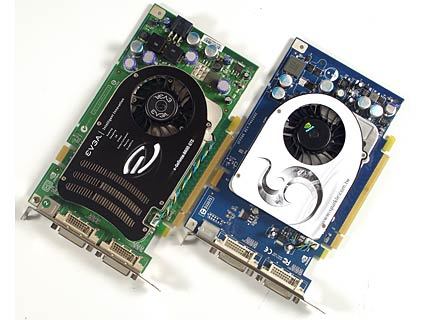GeForce 8600: DirectX 10 For The Masses
Rehash Or New And Improved?
The consumer graphics market is filled with products these days. I remember when there were only a few products from a single company but there were many companies. Today we have to depend on two major players and a ton of products. In days gone by there were differing approaches to where companies thought graphics would move. Of course there were the application programming interfaces of OpenGL and Direct3D (DX video component), but there were others such as 3DFX's Glide. Multiple APIs made programming a bit of a challenge as developers tried to building their games to span as many platforms as possible. The move to only two core APIs has made it a bit easier to code games and applications but there has been another effect, the shrinking of main producers of graphics processors.
While Intel is the largest producer of graphics devices, there are really only two key players for the discrete graphics market, Nvidia and AMD (formerly ATI). This has changed the dynamic in the implementation of new devices and the number of product variants. Looking back to the card that put Nvidia squarely on the map was the GeForce 256. For ATI/AMD it was the 9700 and 9800 series cards. Ironically there were only a few variations of those cards. Radeon 9800 has basically two memory densities 128 and 256 as well as a few models like Pro, XT and XT Platinum Edition.
This made for only a handful of graphics cards on the market. It also allowed consumers the ease of knowing what they were getting in terms of performance and price. This has all but disappeared in recent history as we have a plethora of naming conventions, models, clock speeds, memory densities, and architectures. A diversity of cards is a good thing for the consumer but it is getting to the point that product differentiation has lost some of its meaning.
You might be asking, "So why the history lesson, I thought this was a product launch?" Simple, we have yet another series of cards hitting the market in a matter of months which will add yet another set of models that consumers will have to differentiate between. More is good but not always best. There are a couple of questions that need to be asked regarding this product launch. First, does this new offering give me something that the previous offering could not? Secondarily, is this new card really a better buy for the consumer?
Join our discussion on this topic
Get Tom's Hardware's best news and in-depth reviews, straight to your inbox.
